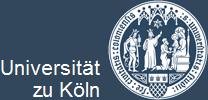Investigation of the diurnal cycle of stratocumulus clouds at the northern coast of Chile
This page lists all metadata that was entered for this dataset. Only registered users of the CRC1211DB may download this file.
Feature
 Request download
Request download
Citation
Citation Options
Identification
| Title: | Main Title: Investigation of the diurnal cycle of stratocumulus clouds at the northern coast of Chile |
| Description: | Abstract: Marine stratocumulus clouds of the eastern Pacific play an essential role in the Earth's energy and radiation budget. Parts of these clouds off the west coast of South America form the major source of water to the hyper-arid area at the northern coast of Chile. Within the DFG collaborative research center 'Earth evolution at the dry limit', for the first time, a long-term study of the vertical structure of clouds and their environment governing the moisture supply to the coastal part of the Atacama is available. Three state of the art ground based remote sensing instruments were installed for one year at the airport of Iquique/Chile (20.5°S, 70.2°W, 56m a.s.l.) in close cooperation with Centro del Desierto de Atacama (Pontificia Universidad Católica de Chile). The instruments provide vertical profiles of wind, turbulence and temperature, as well as integrated values of water vapor and liquid water. Instrument synergy provides vertical cloud structure information. We observe a land-sea circulation with a super-imposed southerly wind component. Highest wind speeds can be found during the afternoon. Clouds show a distinct seasonal pattern with a maximum of cloud occurrence during winter (JJA) and a minimum during summer (DJF). Clouds are higher and vertically less extended in winter than in summer. Liquid water path shows a diurnal cycle with highest values during night and morning hours and lowest values during noon. Furthermore, the clouds contain much more liquid water in summer. The turbulent structure of the boundary layer, together with the temperature profile, can be used to characterize the mechanism driving the cloud life cycle. |
Responsible Party
| Creators: | Sarah Westbrook (Author), Jan Schween (Author), Ulrich Löhnert (Author) |
| Publisher: | CRC1211 Database (CRC1211DB) |
| Publication Year: | 2019 |
Topic
| CRC1211 Topic: | Climate |
| Related Subproject: | A1 |
| Subjects: | Keywords: Meteorology, Field Experiments , Remote Sensing GEMET Inspire Spatial Data Themes: Atmospheric conditions, Environmental monitoring facilities GEMET Thesaurus entries: meteorological research, fog, cloud, wind |
| Geogr. Information Topic: | Climatology/Meteorology/Atmosphere |
File Details
| Filename: | chile_poster_november_2019.pdf |
| Data Type: | Text - Text |
| File Size: | 1.5 MB |
| Dates: | Other: 28.03.2018 (start of presented Data) Other: 05.03.2019 (end of presented Data) Other: 25.11.2019 (Poster presented) |
| Mime Type: | application/pdf |
| Data Format: | PDF (1.5) |
| Language: | English |
| Status: | Completed |
Constraints
| Download Permission: | Only Project Members |
| General Access and Use Conditions: | According to the CRC1211DB data policy agreement. |
| Access Limitations: | According to the CRC1211DB data policy agreement. |
| Licence: | None |
Geographic
Specific Information - Presentation
| Presenter: | Jan H. Schween |
| Presentation Date: | 25th of November, 2019 |
| Presentation Type: | Poster |
| Event: | The coastal fog geo-ecosystems in the Chilean-Peruvian Desert: understanding biosphere-atmosphere interactions |
| Event Type: | Workshop |
| Event Location: | Alto Patache, Atacama UC Research Station, Chile |
| Event Duration: | 25th of November, 2019 - 27th of November, 2019 |
| Event Website: | http://blank.org/ |
Metadata Details
| Metadata Creator: | Jan Schween |
| Metadata Created: | 02.12.2019 |
| Metadata Last Updated: | 02.12.2019 |
| Subproject: | A1 |
| Funding Phase: | 1 |
| Metadata Language: | English |
| Metadata Version: | V50 |
Metadata Export
| Metadata Schema: |
Dataset Statistics
| Page Visits: | 216 |
| Metadata Downloads: | 0 |
| Dataset Downloads: | 1 |
Dataset Activity
Feature
 Download
DownloadBy downloading this dataset you accept the license terms of CRC1211DB Data Protection Statement
Adequate reference when this dataset will be discussed or used in any publication or presentation is mandatory. In this case please contact the dataset creator.
Adequate reference when this dataset will be discussed or used in any publication or presentation is mandatory. In this case please contact the dataset creator.





